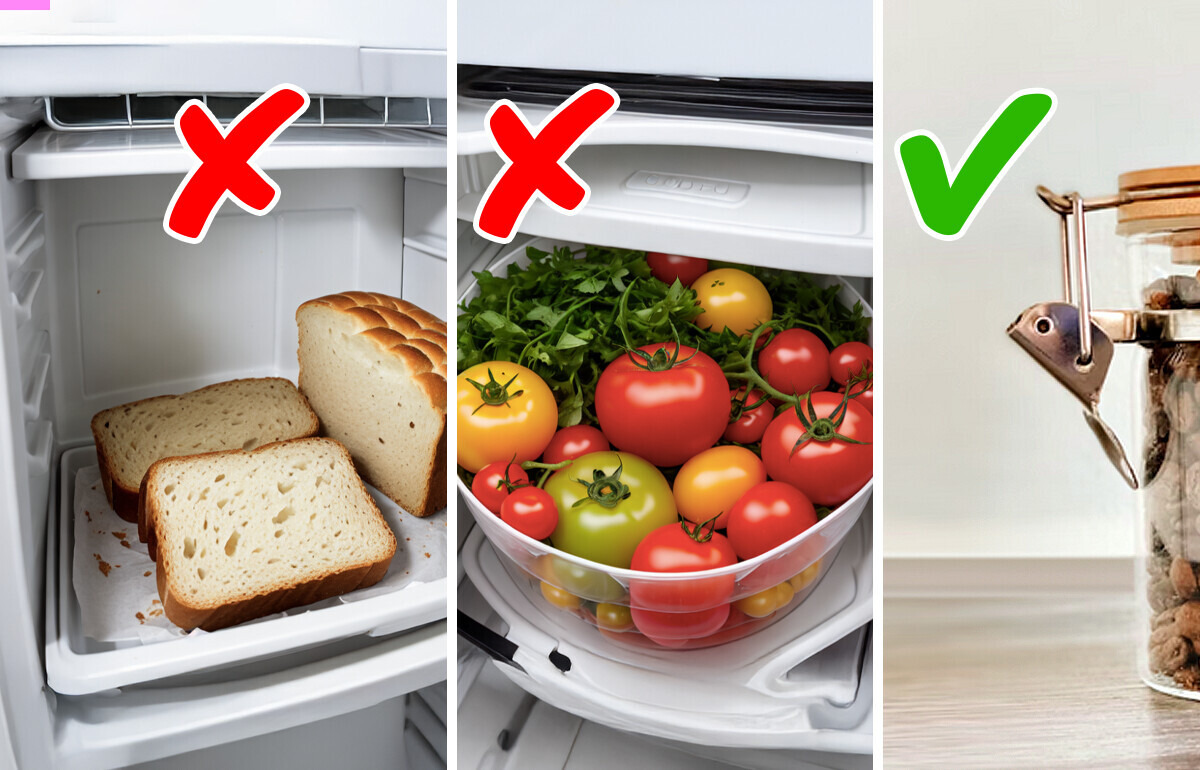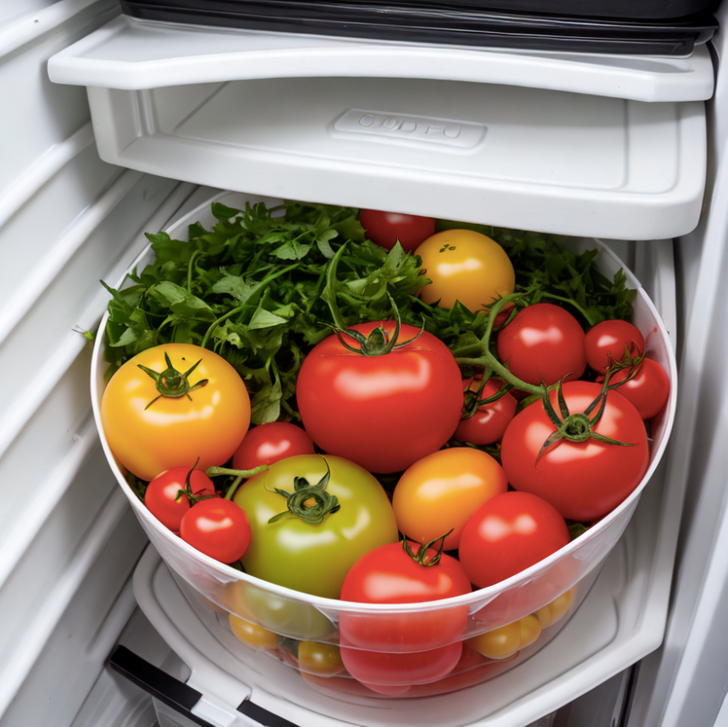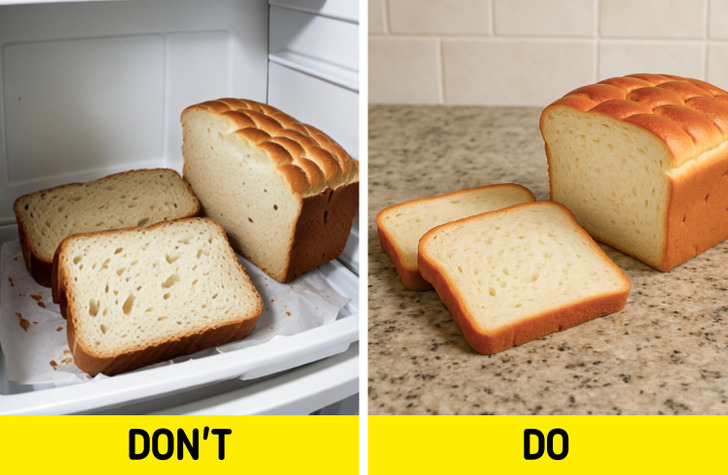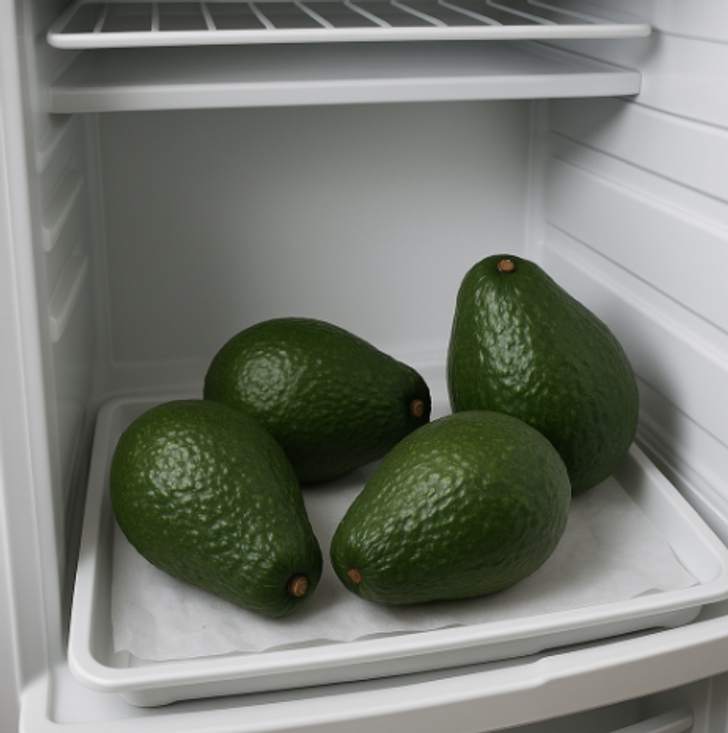10 People Who Lost Their Families Over Inheritance


Ever grabbed a tomato from the fridge, only to find it tasteless and crumbly? Or noticed your potatoes turning weirdly sweet? That’s not bad luck, it’s science.
Turns out, the fridge isn’t always the best place for your food. In fact, for some ingredients, it’s the worst. Cold temperatures can ruin textures, zap flavors, and even make certain foods spoil faster.
So if you’ve been stuffing everything in the fridge without a second thought, it’s time to break the habit. Let’s talk about the foods you should never, ever refrigerate.

If you’ve ever bitten into a fridge-cold tomato and thought, Why does this taste like water?—this is why. Tomatoes hate the cold. The fridge stops them from ripening and messes up their texture, turning them mealy, bland, and disappointing.
What to do instead: Keep tomatoes on the counter. If they’re getting too ripe, use them ASAP—maybe in a quick homemade salsa or a tomato sauce.
Potatoes in the fridge seem like a good idea, right? Wrong. The cold turns the starches into sugar, making your potatoes taste strangely sweet. Worse, it changes their texture, making them gritty when cooked.
Ever had soggy, weirdly sweet fries? That’s the fridge’s fault.
What to do instead: Store potatoes in a cool, dark place like a pantry or a paper bag in a cupboard. Just keep them away from onions (more on that later).
If you put onions in the fridge, they turn soft, soggy, and moldy in record time. The moisture inside speeds up spoilage, and soon, that once-firm onion is leaking all over your vegetable drawer.
That’s not all, cold temperatures can actually change the flavor of onions, making them less sharp and more dull.
What to do instead: Keep them in a cool, dry place with plenty of air circulation. And here’s a pro tip: Never store them next to potatoes. They release moisture and gases that make each other spoil faster.
Garlic is a flavor powerhouse, but stick it in the fridge, and suddenly, it’s rubbery, sprouting, and lifeless. The cold makes it sprout faster, and once that happens, the flavor gets weaker.
Ever tried chopping garlic and found a green stem in the middle? That’s a sign your garlic has started to grow, and the taste won’t be the same.
What to do instead: Keep garlic in a dry, cool, well-ventilated spot. Stored correctly, it lasts for months without sprouting.
Honey never goes bad. Ever. Archaeologists have even found 3,000-year-old honey in Egyptian tombs that’s still safe to eat.
But put it in the fridge, and you’ll end up with a grainy, crystallized, dough-like mess. The cold makes honey solidify, and while you can fix it by gently warming it up, why make things harder for yourself?
What to do instead: Keep honey in a sealed jar at room temperature. It’ll stay smooth, golden, and perfect for drizzling over everything.

It’s a myth that storing bread in the fridge keeps it fresh longer. The cold makes bread go stale faster by drying it out. Instead of soft, fluffy slices, you get dry, hard bread that crumbles when you try to spread butter on it. Even worse, fridge-stored bread doesn’t even toast well.
What to do instead: If you eat bread regularly, store it at room temperature in a breadbox. If you need to keep it longer, freeze it—it stays fresh for months and toasts up beautifully straight from the freezer.

Unripe avocado in the fridge will take forever to ripen. The cold slows down the ripening process, keeping your avocado rock-hard for what feels like an eternity. On the flip side, if you have a ripe avocado and don’t eat it fast enough, it turns brown and mushy. The fridge can’t stop the inevitable.
What to do instead: Keep unripe avocados on the counter until they’re soft. Then, if you need to slow down the ripening, put them in the fridge. But don’t leave them there too long!
Coffee beans absorb smells like crazy. Put them in the fridge, and suddenly, your morning cup tastes like last night’s takeout. And that’s not all. The cold messes with the oils in the beans, dulling the rich aroma and ruining the flavor.
What to do instead: Store coffee in an airtight container at room temperature, away from moisture and light. If you buy in bulk, freeze the extra beans—but never refrigerate them.
Put fresh basil in the fridge, and it wilts, turns dark, and loses its aroma almost instantly. Basil is sensitive to cold, and the fridge destroys its delicate leaves in no time.
What to do instead: Treat basil like fresh flowers—keep it in a glass of water on the counter. If you must store it, wrap it in a damp paper towel and place it in an airtight container.
Refrigerating bananas stops them from ripening properly. The peel turns black, the inside becomes mushy, and the flavor weakens. Cold temperatures also damage the fruit’s cell structure, ruining its creamy texture.
What to do instead: Keep bananas at room temperature. To slow down ripening, separate them from the bunch or wrap the stems in plastic wrap.
Ever pulled a bottle of olive oil from the fridge and wondered why it looks cloudy and thick? That’s because cold temperatures make oils partially solidify, turning them into a weird, goopy mess. Refrigeration can also alter the taste of some oils, especially delicate ones like extra virgin olive oil.
What to do instead: Store oils in a cool, dark place away from heat. If you’re using coconut oil, don’t worry—it naturally solidifies below 76°F (24°C), but a quick warm-up fixes that.
Refrigeration makes peanut butter dry and hard, turning it into a thick paste that’s difficult to spread. The cold also affects the texture, making it less creamy over time.
What to do instead: Store peanut butter at room temperature for a smooth, spreadable consistency. If it’s natural peanut butter, stir it well and store it upside down to prevent oil separation.
Your fridge is great, but it’s not a one-size-fits-all solution. These 10 popular foods need to be stored in the fridge. So the next time you’ve finished your grocery run, don’t dump everything in the fridge — ask yourself which foods really thrive in the cold. Your tastebuds will thank you!











